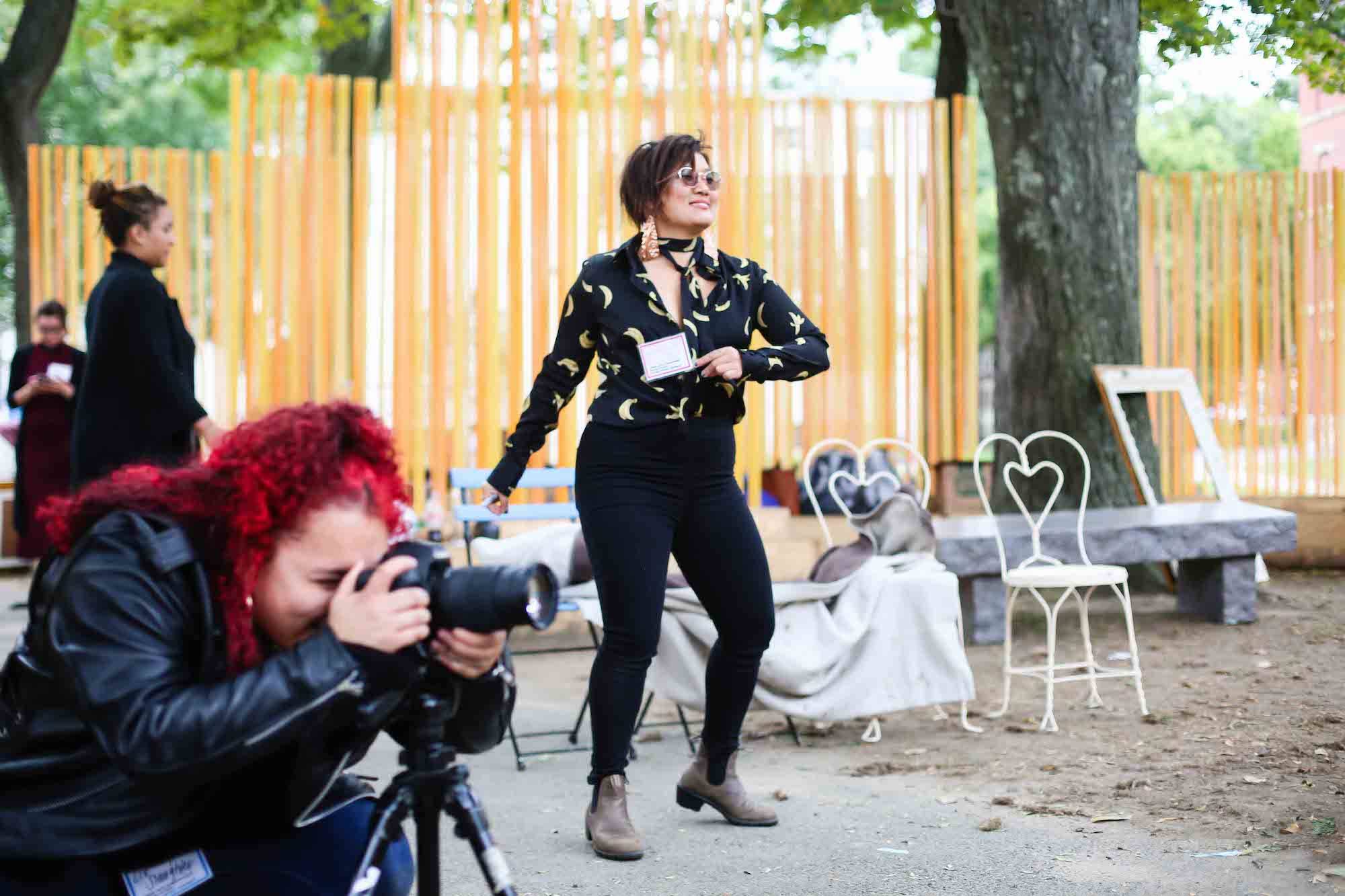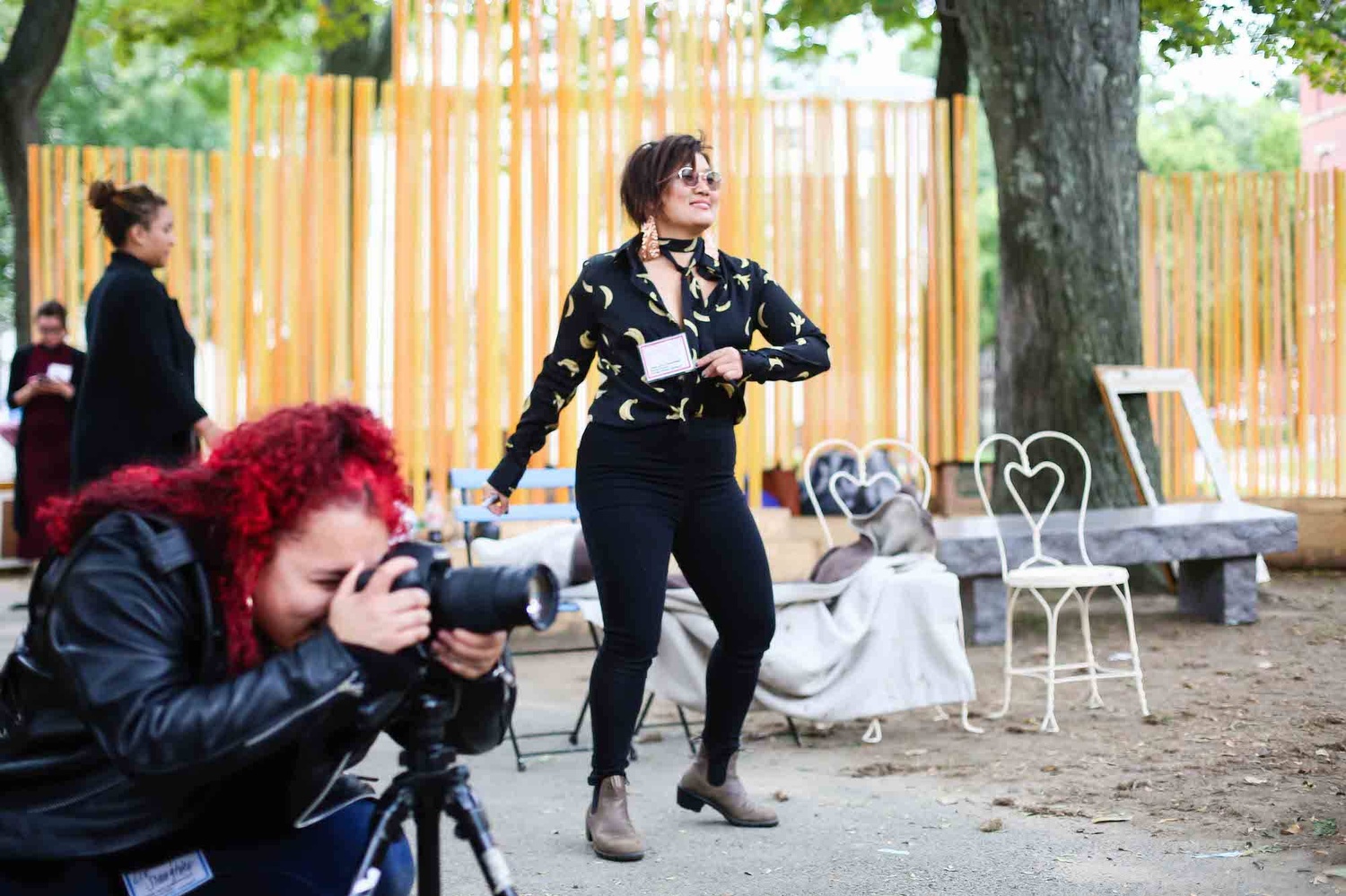
News
Summers Will Not Finish Semester of Teaching as Harvard Investigates Epstein Ties

News
Harvard College Students Report Favoring Divestment from Israel in HUA Survey

News
‘He Should Resign’: Harvard Undergrads Take Hard Line Against Summers Over Epstein Scandal

News
Harvard To Launch New Investigation Into Epstein’s Ties to Summers, Other University Affiliates

News
Harvard Students To Vote on Divestment From Israel in Inaugural HUA Election Survey
Portrait of an Artist: Diana Oh


Performance artist Diana Oh is currently in a season-long residency at the American Repertory Theater premiering a multi-part work titled “Clairvoyance.” She/They wrote and starred in “{my lingerie play},” a series of performances in New York in 2017. The Harvard Crimson had a chance to interview her/them about her/their current projects and residency.
The Harvard Crimson: Looking back at your past, was there a specific moment where you knew you wanted to become an artist? Or was it a gradual process where you realized you had a voice and wanted to contribute?
Diana Oh: When I was born. There are these tattoos on my fingers: Oh, Yea, Bin. Oh is my last name. Yea Bin means artistic light in Korean. My dad is a clairvoyant, so he knew what his kids were going to be, how old we were going to be, and what our destinies were gonna be.
THC: You attended Smith College, a couple hours west of Cambridge. How did you grow as a person and performer there?
DO: I grew into my queerness there. It was a really courageous space where walking around wearing nothing was not a big deal. It was truly an utopia for anybody that isn’t a cisgendered man. So that was really refreshing, and I’m really thankful for that because it taught me that I want to create spaces that rise to that same level of humanity. It was a rude awakening a couple of years out of school where it was like, “Right, OK, I’m gonna be slut-shamed for the rest of my life unless I create spaces that understand.”
One of the first things at Smith was this convocation. We re-enact it in “{my lingerie play}.” The night before classes start, all the students dress up in underwear. The whole point is you don’t dress up. You dress down. And that’s the first event before classes start. Your teachers are there and the faculty’s there and you have all the students wearing aprons and nothing else. You have students dressed up in tin foil because that was the house name. Getting to scream in your body that way, never having to worry once about what was going to happen to you — that’s incredible.
THC: With your installation being called “Clairvoyance,” what do you hope to get people to see during your residency?
DO: Their hearts. I think that’s a big one. Compassion. I think living a more present, heart-centered life is only going to help everybody. I think learning that we’re not machines, that we are meant to look people in the eye and feel feelings. I think also that teaching about our gut and what it means to trust our gut and what it means to actually feel something in our bodies when something is right or wrong and getting a voice there. And how certain people feel permission to do that and certain people don’t. I think that “Clairvoyance” is about knowing something that maybe your brain can’t wrap around, but your body can. And I feel like I have a lot of experience with following my body before my brain.
THC: Your first installation focused on choosing your family. Was there something empowering about that topic that made you choose it for your first installation?
DO: Chosen family is a word that’s thrown around in a lot of queer and trans communities. I’ve heard a lot of stories and have had a lot of friends open up about being rejected by their family they were born int, and needing to move into a different city to find the people who would really accept them for who they were. Thankfully, I haven’t had that. I didn’t get kicked out, but there was a kind of confusion around my identity. A lot of that is intergenerational trauma. I was born to two Korean immigrants who came here in the 1980s, and they didn’t have an understanding. They didn’t even know.
THC: “{my lingerie play}” has received a lot of audience interaction. Do you think that’s important for authenticity, and do you think more theater should be interactive?
DO: To each their own! For me, it’s about making art that’s true to you. For “{my lingerie play},” so much of it was created on the spot and in the moment, spontaneously, and it was from the gut. That’s a way I personally like to create and that’s why this year really works for me because it’s like being on the ground.
THC: Your next installation is titled “White People Read.” What do you hope to get out of it?
DO: “White People Read” is an installation that I hope provides a bridge. The way I described it to my friend Sophie was that we have to look at this as more art, less YMCA. There’s something about asking what made individuals come in and read books that are from a personal reading list that’s come from my heart. It’s sourced from this place: “What are the books that really resonate with me, that make me feel seen, that make me accountable to those I love, that make me want to show up as a civilian in the world right now?” Being able to make that list and say, OK, the people who I really want to read these books are white people, particularly white people in power. I think there’s this lack of understanding, or there’s a lot of blind spots. I’m often brought in to teach, or brought in to ask groups a lot of questions, or I’m brought in and told things that are racist or sexist or genderist. Wouldn’t it be amazing if people took on the learning of people of marginalized experiences for themselves, rather than let us teach you? I believe in call-in culture, not call-out culture.
THC: Finally, do you think art’s role is changing? And, if yes, is that change for the better?
DO: I think it’s getting really fierce and unapologetic in a way that’s really refreshing. I feel like people have stopped pressing the snooze button. It’s this immediacy and hunger and this Renaissance. I was telling Mark, the producer here, that we are in the middle of a Renaissance right now, and I really believe that structures are changing behind the table where people are having this awareness. Acting managers and agents can’t yell at their clients anymore. Even that simple gesture then changes the projects that people say “yes” and “no” to. It changes whether you can speak up.
Want to keep up with breaking news? Subscribe to our email newsletter.
